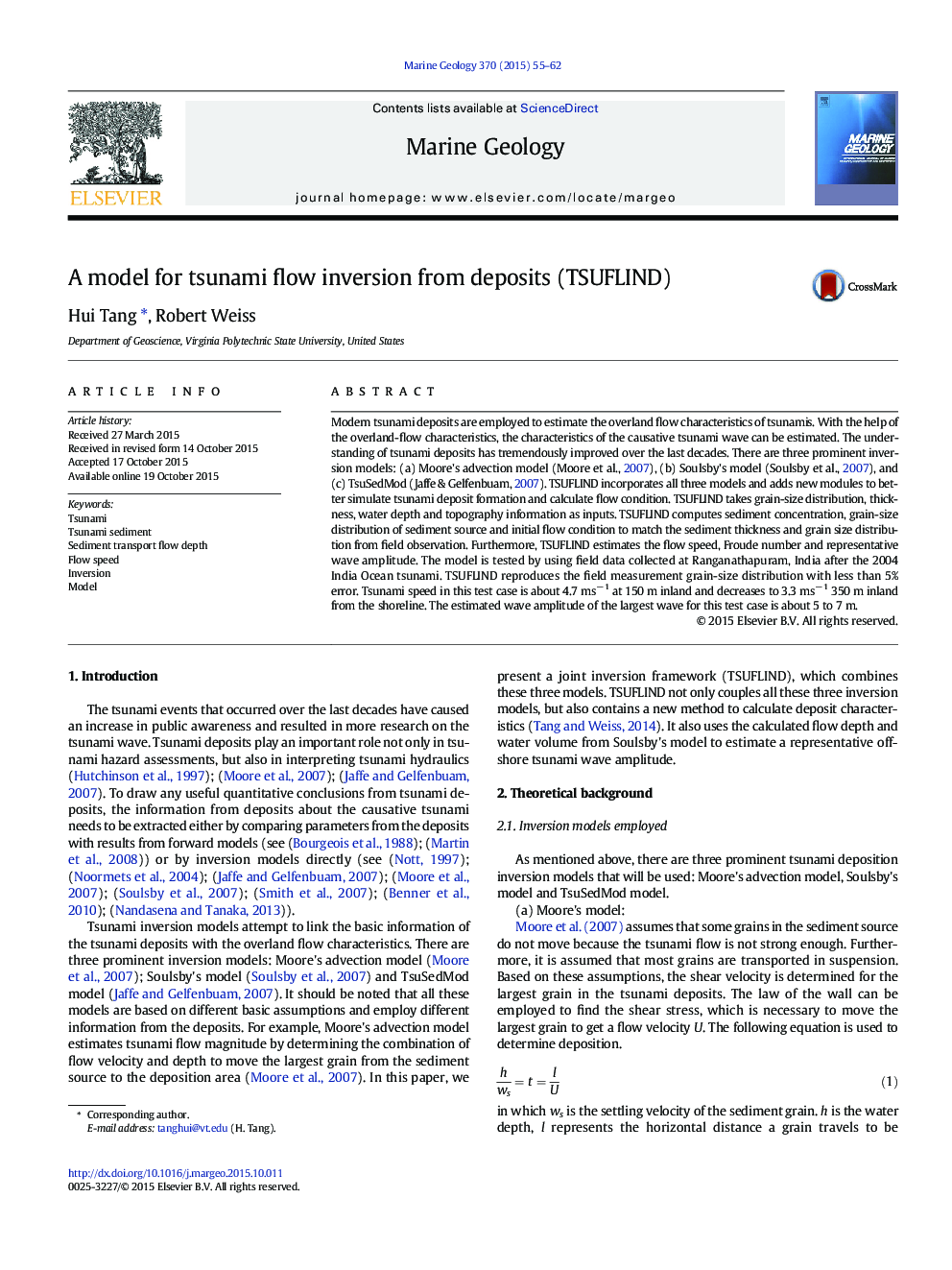| کد مقاله | کد نشریه | سال انتشار | مقاله انگلیسی | نسخه تمام متن |
|---|---|---|---|---|
| 6441442 | 1639082 | 2015 | 8 صفحه PDF | دانلود رایگان |
عنوان انگلیسی مقاله ISI
A model for tsunami flow inversion from deposits (TSUFLIND)
دانلود مقاله + سفارش ترجمه
دانلود مقاله ISI انگلیسی
رایگان برای ایرانیان
موضوعات مرتبط
مهندسی و علوم پایه
علوم زمین و سیارات
ژئوشیمی و پترولوژی
پیش نمایش صفحه اول مقاله

چکیده انگلیسی
Modern tsunami deposits are employed to estimate the overland flow characteristics of tsunamis. With the help of the overland-flow characteristics, the characteristics of the causative tsunami wave can be estimated. The understanding of tsunami deposits has tremendously improved over the last decades. There are three prominent inversion models: (a) Moore's advection model (Moore et al., 2007), (b) Soulsby's model (Soulsby et al., 2007), and (c) TsuSedMod (Jaffe & Gelfenbuam, 2007). TSUFLIND incorporates all three models and adds new modules to better simulate tsunami deposit formation and calculate flow condition. TSUFLIND takes grain-size distribution, thickness, water depth and topography information as inputs. TSUFLIND computes sediment concentration, grain-size distribution of sediment source and initial flow condition to match the sediment thickness and grain size distribution from field observation. Furthermore, TSUFLIND estimates the flow speed, Froude number and representative wave amplitude. The model is tested by using field data collected at Ranganathapuram, India after the 2004 India Ocean tsunami. TSUFLIND reproduces the field measurement grain-size distribution with less than 5% error. Tsunami speed in this test case is about 4.7 msâ 1 at 150 m inland and decreases to 3.3 msâ 1 350 m inland from the shoreline. The estimated wave amplitude of the largest wave for this test case is about 5 to 7 m.
ناشر
Database: Elsevier - ScienceDirect (ساینس دایرکت)
Journal: Marine Geology - Volume 370, 1 December 2015, Pages 55-62
Journal: Marine Geology - Volume 370, 1 December 2015, Pages 55-62
نویسندگان
Hui Tang, Robert Weiss,